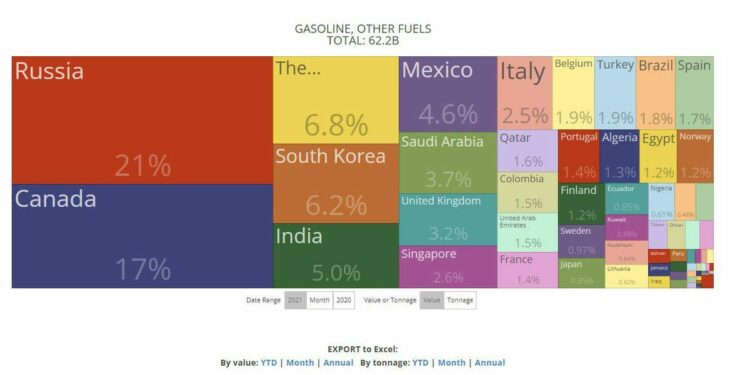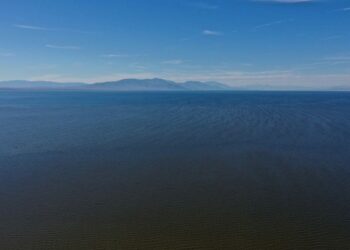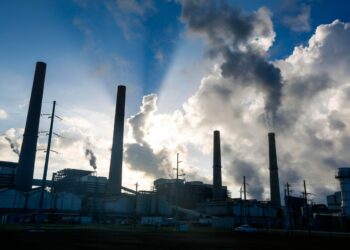The United States imported more gasoline and other refined petroleum products from Russia than any other country in 2021.
That will make it tricky for President Biden and the United States to maneuver as it attempts to impose restrictions on U.S. exports to Russia, in the wake of President Vladimir Putin’s invasion of Ukraine.
What will also make it tricky is that our trade with Russia is not particularly balanced, although certainly gasoline and oil imports exacerbate that imbalance.
In 2021, Russia accounted for 21% of all U.S. gasoline imports, with Canada second at 17%. By value, Russian imports increased 71.05%, which is slightly less than overall imports, which increased 80.53%. The Russian total was $12.78 billion.
These are not, however, record years for gasoline imports, thanks to increased U.S. production brought on by hydraulic fracking.
Oil and gasoline are complicated markets, so it’s not as simple as flipping a switch, but it’s worth noting that the United States exported $84.94 billion of gasoline and other refined petroleum products in 2021, or about six times as much as those Russian imports.
All that gasoline distorts the trade balance, of course. In 2021, 82% of all U.S. trade with Russia was an import, with only 12% a U.S. export. The U.S. average with the world is 38% exports and 62% imports.
What the United States did export to Russia in 2021 was civilian aircraft and parts, motor vehicle parts and passenger vehicles. Those three alone accounted for more than 25% of the total. But there were also exports of satellites and related equipment, the category that includes vaccines, tractors, medical instruments and diesel engines.
Further complicating the geopolitics is that the United States will be, in essence, in a trade war with both Russia and China, which was inherited from former President Donald Trump and which Biden has chosen to leave in place.
It’s getting harder and harder to act like the world hasn’t returned to the decades-long Cold War after 30 years of basking in the warm glow of globalization, brought on by the concurrent collapse of the Berlin War and Soviet Union as well as the opening of China led by former President Deng Xiaoping.
Both Russia and China, under President Xi Jinping, are acting aggressively to expand their territories, whether in Eastern Europe with Crimea, Ukraine and the increasingly puppet-like Belarus, or in the South China Sea, with Hong Kong and territorial disputes, created islands and the ever-present risk of Taiwan’s sovereignty.











